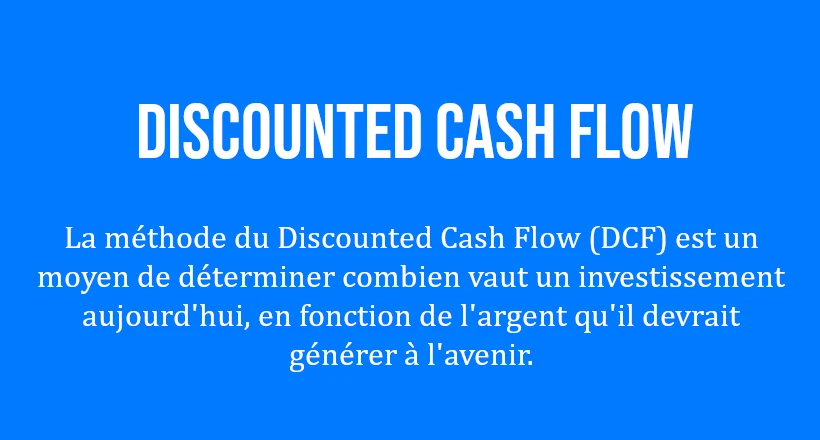What is the Discounted Cash Flow (DCF)

If you are new to the world of investing or looking to enhance your knowledge, you may have heard of the business valuation method called Discounted Cash Flow (DCF). This method is considered one of the most robust ways to assess the value of a company. In this blog post, we provide a comprehensive introduction to the DCF method, the advantages and disadvantages of using it, as well as some tips for incorporating it into your investment strategies.
Explanation
Understand the DCF method
The DCF method is a valuation of the company's worth based on the future cash flows generated by the company. In other words, it takes into account all the future cash flows that will be generated by the company and will be available to the shareholders. These future cash flows are discounted using a discount rate to bring their future value to a present value to obtain an estimate of the current value of the company.
To calculate the Discounted Cash Flow, you must use the following formula:
Enterprise value = ∑[Future cash flows / (1 + discount rate)^n]
This formula ∑ represents the sum of all future cash flows. Each cash flow is divided by `(1 + discount rate)^n`, where 'n' is the year in which the cash flow is received and the discount rate is the interest rate used to discount future cash flows. In practice, calculating DCF can become complex, particularly due to the need to estimate future cash flows and the appropriate discount rate.
Advantages of the DCF method
The DCF method is considered one of the most robust methods for evaluating the value of a company because it takes into account future cash flows and considers the risks associated with the business. Additionally, it also helps identify areas where the company can improve its financial performance.
Disadvantages of the DCF method
However, the DCF method can be complex and requires several subjective estimates to estimate future cash flows and the discount rate. It can also be sensitive to the assumptions used. Additionally, it does not take into account external factors such as general economic conditions and political risks that can influence the value of the company.
Tips for using the DCF method
To successfully use the DCF method, it is important to understand the key data required for the method, such as future cash flows, discount rate, and discount period. You must also perform sensitivity analysis to understand how changes in the assumptions used can affect the estimation of the company's value.
Conclusion
The DCF method is a robust approach to determining the value of a company. However, it is not infallible and should be used with caution and following a rigorous methodology. By understanding the advantages and disadvantages of the DCF method, investors and financial advisors can better comprehend how to use it for making informed investment decisions. By following the above-mentioned tips for using the DCF method, you can effectively incorporate this approach into your investment strategies.

